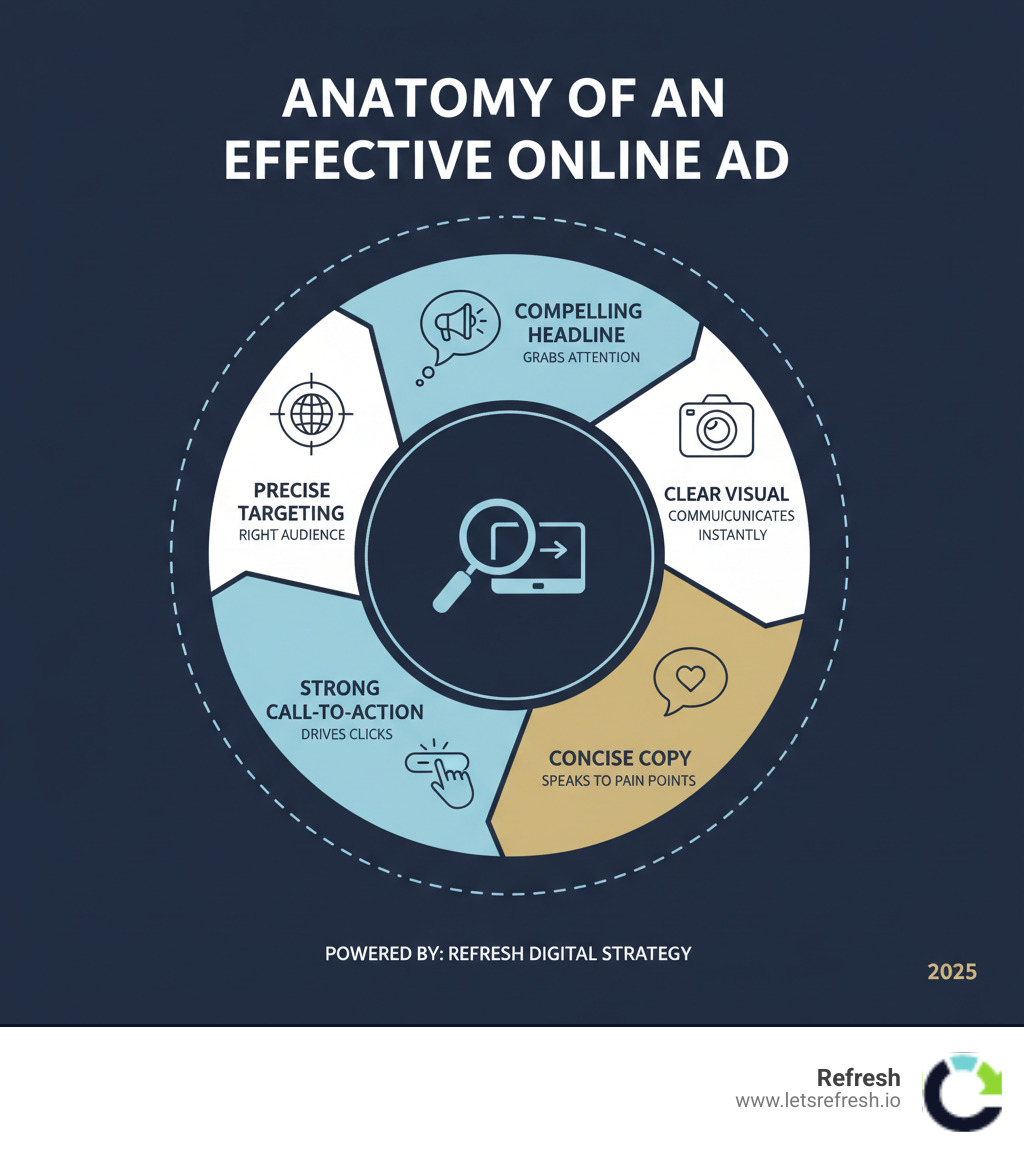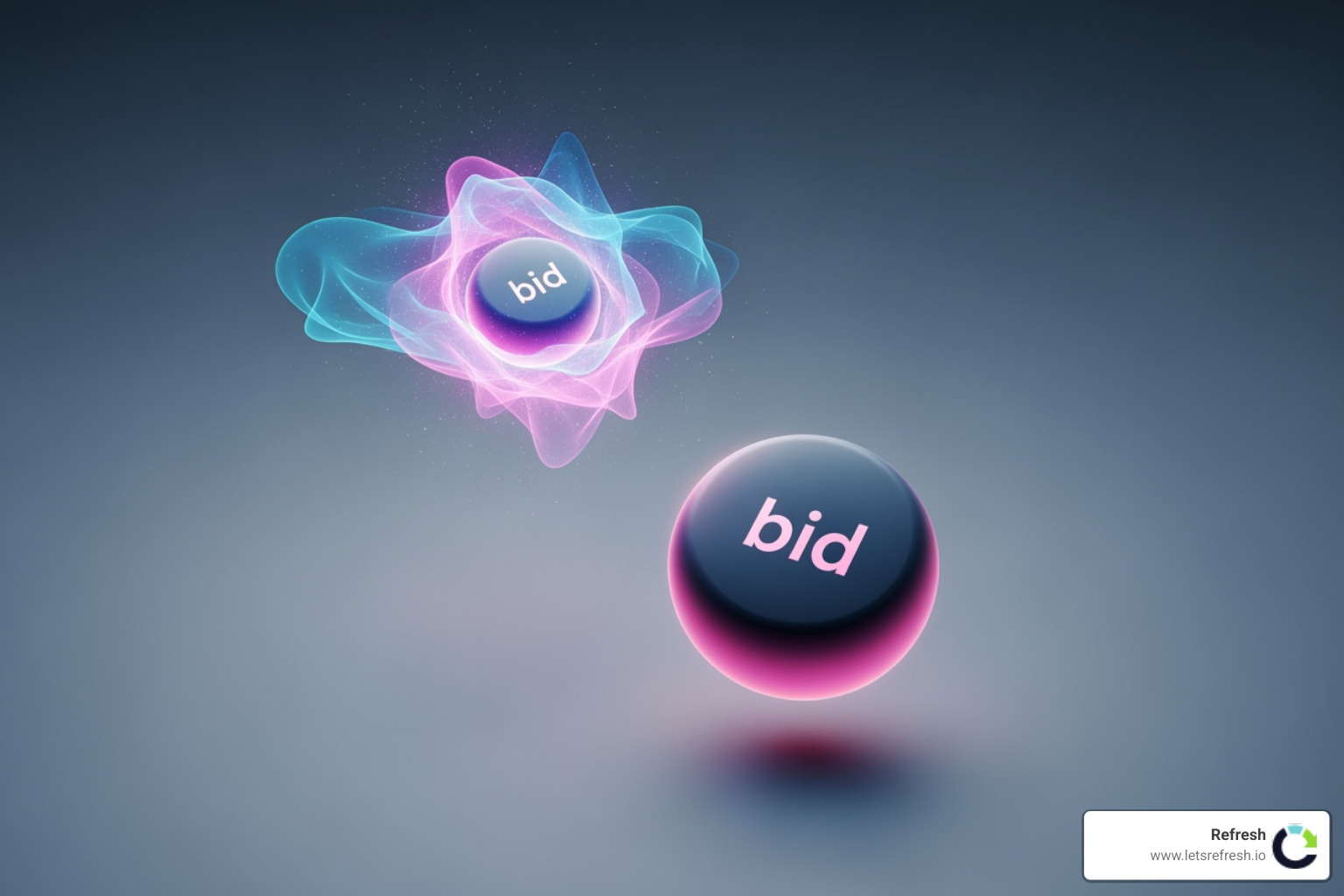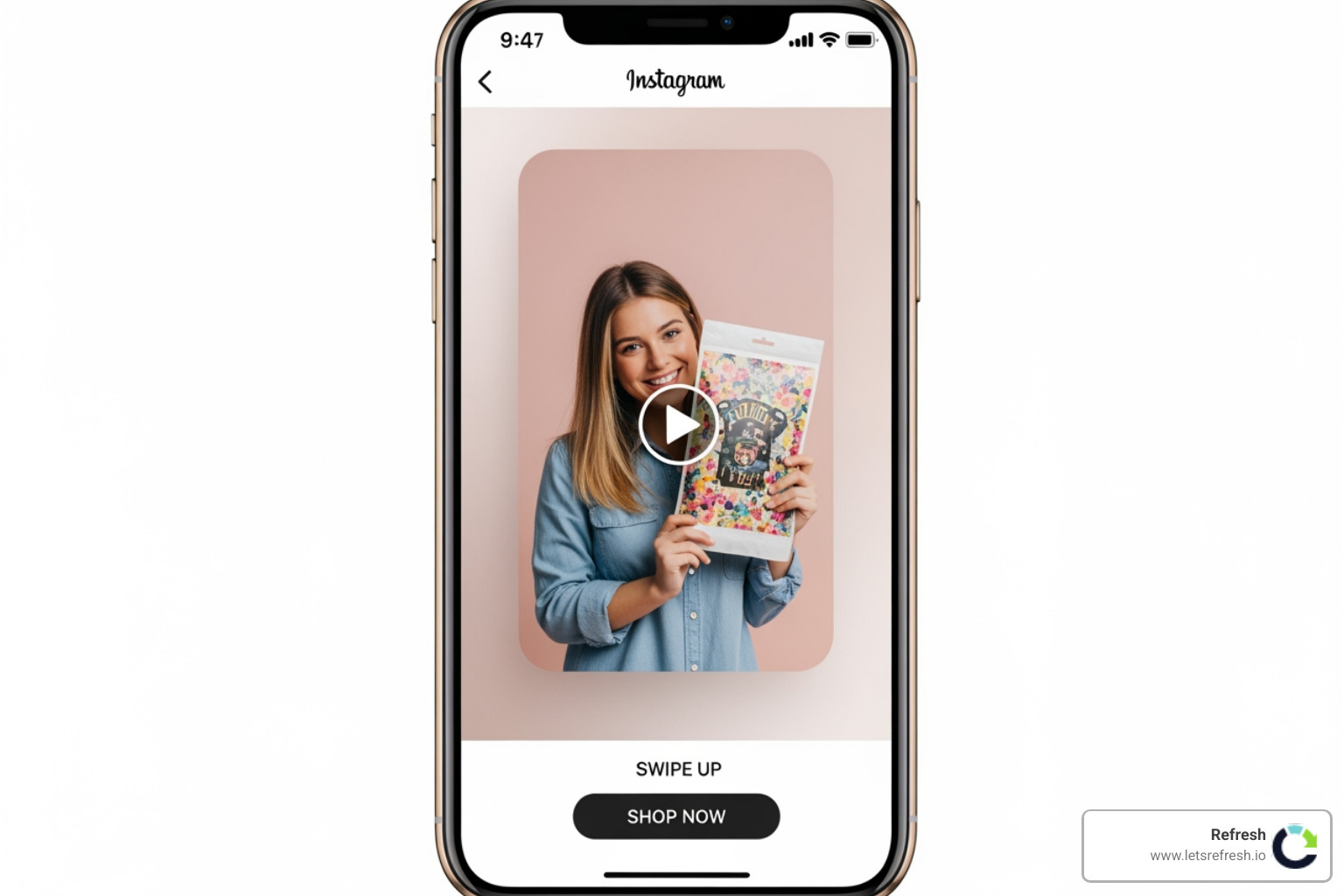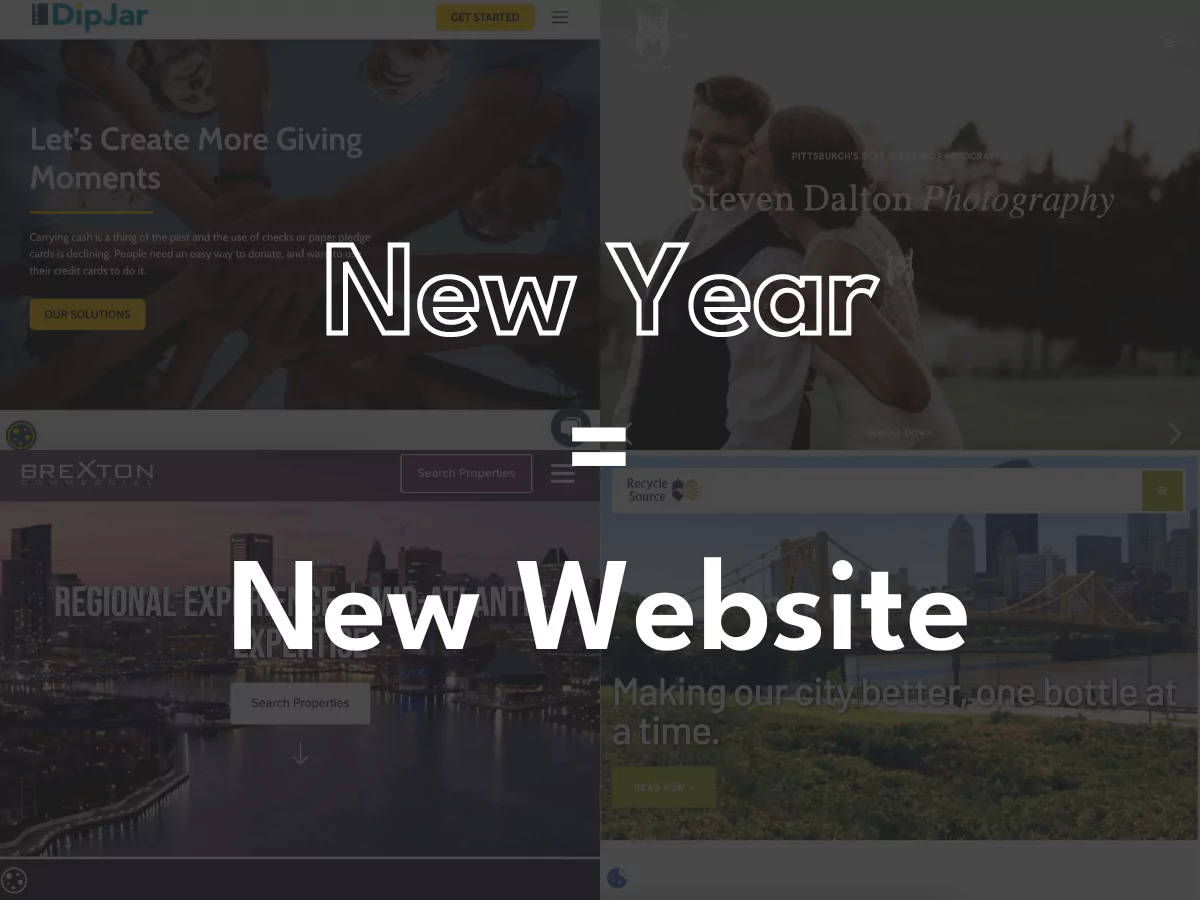November 18, 2025
Why Online Advertising is a Game-Changer for Small Businesses
Effective online advertising is no longer a luxury—it's a necessity for growth. It allows small businesses to reach a global audience, target specific customers with precision, and achieve measurable results, often at a fraction of the cost of traditional advertising.
Here's what makes it so powerful:
- Massive Reach: Connect with billions of people online every day.
- Precise Targeting: Reach customers based on demographics, interests, and behaviors.
- Cost Control: Set your own budget, pay for results (like clicks), and adjust spending in real-time.
- Measurable Impact: Track every impression, click, and conversion to see exactly what's working.
- Higher ROI: Online ads can generate an average of $2 for every $1 spent, with some channels delivering even better returns.
The internet is stuffed with advertisements, but effective online advertising cuts through the noise. Unlike traditional advertising's broad approach, online ads let you put your message directly in front of people actively looking for what you offer. Research shows that simple, well-designed ads featuring a product image can reduce consumers' search time by 25 percent.
The shift to digital is undeniable, with internet advertising revenues reaching $225 billion between 2022 and 2023. Small businesses that accept this change are the ones that will thrive.
But it's not just about spending money. It's about understanding your audience, crafting compelling messages, choosing the right platforms, and continuously optimizing your campaigns. It's about working smarter, not just harder—and that's what this guide will help you do.
I'm Alexander Palmiere, Founder and CEO of Refresh Digital Strategy. We've helped countless small to medium-sized businesses boost their online presence through targeted digital advertising campaigns. I've seen how effective online advertising can transform a business, and I've also seen how poorly executed campaigns can waste budgets. Let's make sure you get it right.

Easy Effective online advertising glossary:
The Foundation: Setting Up Your Campaign for Success

Before you write a single word of ad copy, you need a solid foundation. Effective online advertising starts with understanding the system, defining your goals, and setting a smart budget.
Understanding How Online Advertising Works
Every time someone searches on Google or scrolls through Facebook, an automated auction determines which ads they see. The winner isn't just the highest bidder. The formula is Bid x Quality Score = Ad Rank.
Your Quality Score is crucial. It considers your ad's relevance, its expected click-through rate, and the user's experience on your landing page. This means a well-crafted, relevant ad can outperform a competitor's ad, even with a lower bid. Quality beats quantity.
When it comes to bidding, you can choose between manual bidding for full control or automated bidding, which lets the platform's AI optimize for your goals. We recommend starting with a conservative budget, either daily or for the campaign's lifetime, and adjusting as you gather data. For more guidance on setting up campaigns that deliver, check out our guide on digital ad campaign management.
Setting Clear Objectives and Key Results (OKRs)
Running ads without clear objectives is like taking a road trip without a destination. Defining your Objectives and Key Results (OKRs) is absolutely essential.
Your objectives should follow the SMART framework: Specific, Measurable, Attainable, Relevant, and Time-bound. Instead of a vague goal like "get more customers," aim for something like "increase qualified leads by 20% in the next three months through targeted Google Ads in Cleveland."
Once you've set your objective, identify your Key Performance Indicators (KPIs)—the metrics that tell you if you're winning or need to adjust course. For lead generation campaigns, you'll watch conversion rates and cost per lead. For brand awareness campaigns, focus on impressions and reach.
Setting up conversion tracking on your website isn't optional—it's critical. Without it, you're flying blind. You need to know exactly what happens after someone clicks your ad. Did they fill out a form? Make a purchase? This data is what transforms guesswork into strategy and helps you maximize marketing ROI.
Your campaigns will generally fall into two categories: brand awareness and lead generation. Brand awareness is the long game—building recognition and trust. Lead generation focuses on immediate action—capturing contact information or driving sales. These require different approaches and different metrics for success, so keep them separate in your campaigns.
Understanding how to use SEO in your digital marketing strategy will also inform your ad targeting and messaging, creating a cohesive approach that amplifies your results across all channels.
Crafting Your Message: The Art and Science of a Great Ad
Now that we’ve laid the groundwork for our campaigns, with solid objectives and a good grasp of how the ad auction works, it’s time for the fun part: creating the ads themselves! This is where your brand's personality shines and where we turn strategic planning into compelling communication. Think of it as painting the walls of our well-built house – we want them to be simple, clear, and absolutely captivating.
Know Your Audience, Know Your Message
This isn't just a suggestion; it's the golden rule of effective online advertising. If you don't truly understand who you're talking to, your message will likely get lost in the digital shuffle. For small businesses, especially in vibrant communities like Pittsburgh, Cleveland, and Charlotte, this local insight is incredibly powerful.
We start by really digging into audience research to build detailed buyer personas. This isn't about guessing; it's about understanding the real people you want to reach. We look beyond just basic details like age and location. We dive into their interests (what makes them tick?), their pain points (what problems are they trying to solve?), and their online behavior (where do they hang out online, and what content do they love?).
Let's say you own a cozy coffee shop in Charlotte. Are you trying to attract busy professionals needing a quick morning pick-me-up? Or perhaps students looking for a quiet study spot with great Wi-Fi? Each group has different needs and desires. The "busy professional" might respond to an ad highlighting speed and convenience, while the "student" might appreciate a cozy atmosphere. Tailoring your ad copy based on these insights ensures your message truly resonates. This careful approach also guides your strategy through all customer journey stages, from the first glance to a loyal purchase. If you're running the show solo, our guide From Solo to Success: The Solo Entrepreneur's Blueprint for Digital Marketing offers even more tips on mastering this.
The Core Principles of Effective Online Advertising
In today's crowded online world, cutting through the noise often means keeping things simple. Research published in the Journal of Consumer Research found that online ads featuring a clear product image can actually reduce consumers' time to search by 25 percent. That’s a huge win! This isn't just about making things look pretty; it's about making your message easy to grasp quickly. Our brains are bombarded with information, so simpler ads mean less mental effort for your potential customers.
So, how do we create ads that are both simple and impactful? Here are our core principles:
- Simplicity and Clarity: Uncluttered visuals and straightforward language are your best friends. Avoid jargon or overly complex designs. An ad should convey its main point in a flash.
- Single Product Image: If you're selling a product, a clear, high-quality image is often far more effective than a busy graphic. It helps people instantly recognize what you're offering.
- Compelling Headlines: This is your first impression, so it needs to grab attention and immediately communicate value.
- Essential Details: If you're running a sale, state the discount! If it's a limited-time offer, include the deadline. These details are often the motivators.
- Strong Call to Action (CTA): Tell people exactly what you want them to do next. Whether it's "Buy Now," "Learn More," or "Get a Quote," make it direct and impossible to misunderstand.
Writing Ad Copy That Converts
Your ad copy is the voice of your brand. It needs to be concise, compelling, and speak directly to your audience's needs and desires. We often use the classic AIDA model as a helpful roadmap for crafting truly effective copy:
- Attention: This is your headline's job. Make them stop scrolling!
- Interest: Once you have their attention, pique their curiosity. What problem do they have that you can solve?
- Desire: Explain how your product or service is the perfect solution. Focus on the benefits they'll enjoy, not just a list of features. Tap into their emotions – how will your solution make them feel better, happier, or more successful?
- Action: This is where your powerful Call to Action comes in. What’s the very next step you want them to take?
Here are some tips for writing ad copy that converts: use action-oriented language, highlight benefits over features, keep it concise, address pain points directly, and create a sense of urgency or scarcity ("Limited-time offer!") to motivate action. For small businesses, avoiding common pitfalls is crucial. Our guide on 7 Common Facebook Ad Mistakes and How to Avoid Them offers helpful insights that apply across various platforms. Consistent digital ad campaign management and continuous refinement of your messaging will always lead to the best results.
Choosing Your Battlefield: Where to Run Your Ads
With a clear message in hand, the next step is to choose the right platforms to deliver it. The digital landscape offers a diverse array of channels, each with its unique strengths. The best battlefield for your ads depends entirely on where your target audience spends their time and what your campaign objectives are.

Search Engine Marketing (SEM) for High-Intent Customers
When someone is actively searching for a product or service, they have high commercial intent. This is where Search Engine Marketing (SEM), primarily through Google Ads, shines. SEM allows us to place our ads directly at the top of search engine results pages (SERPs) when users search for specific keywords.
- Pay-Per-Click (PPC): You only pay when someone clicks on your ad. This makes it incredibly cost-effective, as you're paying for engaged users. According to Google, advertisers in the US make, on average, a return of 8:1 for money spent on Google PPC ads, with more conservative estimates still at 2:1.
- Keyword Research: This is the backbone of SEM. We identify the terms and phrases our target audience in Pittsburgh, Cleveland, or Charlotte uses when looking for what we offer. We also use negative keywords to prevent our ads from showing for irrelevant searches.
- Driving Targeted Traffic: SEM is excellent for bringing highly qualified leads directly to your website. If someone searches for "best Italian restaurant Downtown Pittsburgh," an ad for your Pittsburgh Italian restaurant is hitting them at the perfect moment.
While Google dominates the search market, ensure your campaigns are set up effectively. Our guide to Google Ads campaign setup can walk you through the process. Local search ads are particularly powerful for brick-and-mortar businesses, ensuring you appear when nearby customers are looking.
Social Media Advertising for Targeted Reach
Social media platforms are where billions of people spend a significant portion of their online time. Facebook alone boasts over 3.049 billion users, making it an incredible space for businesses to connect with their target audience. Social media advertising allows for incredibly precise targeting based on demographics, interests, behaviors, and even custom audience lists.
- Facebook Ads: With the largest user base, Facebook is often considered a kingpin for social media advertising. It offers robust targeting options (interest-based, custom, lookalike audiences) and a wide array of ad formats, including photo, video, carousel, and lead ads.
- Instagram Ads: Visually driven and popular with younger demographics (18-34), Instagram is perfect for brands that can tell their story through compelling images and videos. Many of Facebook's ad types are available here too.
- LinkedIn for B2B: If your business in Cleveland or Charlotte serves other businesses, LinkedIn is your go-to. With over 706 million users worldwide, it allows for unique targeting based on job title, industry, company size, and professional interests, making it key for B2B success.
Social media advertising is excellent for building brand awareness, fostering community, and driving engagement. It's where you can showcase your brand's personality and leverage user-generated content to build trust. For creative approaches, explore our Creative Social Media Strategies.
The Power of Video and Display Advertising
Sometimes, people aren't actively searching, but they're browsing, consuming content, or watching videos. This is where video and display advertising come into play, offering visual and engaging ways to capture attention.
- YouTube Ads: As the second-largest search engine (and part of Google Ads), YouTube offers massive reach with over 2 billion monthly active users. Its video ad formats include skippable in-stream ads, non-skippable in-stream ads, in-feed video ads, and bumper ads. Video is a powerful medium for storytelling and can significantly increase engagement.
- Display Ads: These are the banner ads you see on websites across the internet. While they might seem less targeted than search ads, they are highly effective for brand awareness and, crucially, for retargeting.
- Retargeting with Display Banners: Imagine a potential customer in Pittsburgh visits your website but doesn't make a purchase. With retargeting, we can then show them your display ads on other websites they visit, keeping your brand top-of-mind and nudging them back towards conversion. This is a powerful technique for maximizing previous ad spend.
Visual storytelling through video and display ads can be incredibly effective. Video ads, for instance, can increase conversion rates by up to 86%. They allow us to convey complex messages quickly and emotionally. For a deeper dive into these options, consult our Digital Advertising Solutions.
Frequently Asked Questions about Effective Online Advertising
We know you've got questions, especially when navigating the exciting world of online ads for your business in Pittsburgh, Cleveland, or Charlotte. Let's tackle some of the most common ones.
How much should a small business spend on online advertising?
This is the million-dollar question, and frankly, there's no single "right" answer, but we can give you a solid framework.
- Start with your goals: Are you looking for brand awareness or immediate sales? The latter often requires a higher initial investment to test and scale.
- The 10% Rule of Thumb: If you're a newer business or haven't tracked your LTV (Lifetime Value) yet, a good rule of thumb is to dedicate 10% of your overall budget to online advertising until you have steady revenue coming in.
- The LTV Formula: For a more precise approach, especially once you have some customer data, use this formula to determine your maximum ad spend per click:
$ Lifetime Value (LTV) x Average Lead-to-Customer Rate % x Average Conversion Rate %For example, if your average customer spends $100 (LTV), your average lead-to-customer rate is 8%, and your average conversion rate is 5%, you should spend no more than $4 for a click. This ensures profitability. - Start Small, Scale with Results: We always recommend starting with a conservative budget, rigorously testing your ads, and then incrementally increasing your spend on what's working. Don't be afraid to pull the plug on underperforming ads quickly! This iterative approach helps you make every dollar count.
Effective online advertising is about getting a return on your investment. If your ads are profitable, don't be scared to increase your budget to reach more potential customers.
Which online advertising platform is best for beginners?
For beginners, the "best" platform often comes down to your business type and audience. However, two platforms stand out for their accessibility and broad reach:
- Facebook Ads (including Instagram): If your goal is to build brand awareness, engage with a community, or showcase visually appealing products, Facebook and Instagram are fantastic starting points. With billions of users, you can find almost any audience, and their targeting capabilities are incredibly robust. It's also generally user-friendly for setting up your first campaigns.
- Google Ads (Search Network): If your business offers a product or service that people actively search for (e.g., "plumber in Cleveland," "wedding photographer Charlotte," "pizza delivery Pittsburgh"), Google Search Ads are a powerhouse. Users here have high commercial intent, meaning they're often ready to buy. You're meeting them at the exact moment of need.
Platform selection should always be based on where your target audience spends their time. If your audience is primarily B2B, LinkedIn Ads might be a better fit, even if it's a bit more complex for beginners. If you're selling highly visual products to a younger audience, TikTok or Pinterest might be surprisingly effective. The key is to choose one or two platforms, learn them well, and expand as you gain experience and data.
How long does it take to see results from online advertising?
The timeline for seeing results from online advertising can vary, but here's what you can generally expect:
- Immediate Traffic: For platforms like Google Search Ads (PPC), you can start seeing traffic and clicks almost immediately after your ads go live. This is one of the biggest advantages of paid advertising over organic methods like SEO.
- Testing Phase (1-4 weeks): The first few weeks of any campaign are typically a testing phase. We're gathering data, seeing which ads resonate, optimizing targeting, and refining our bids. Don't expect immediate profitability; this is an investment in learning.
- Optimization Timeline (Ongoing): Once the initial testing is done, you'll enter an optimization phase. This is an ongoing process where we continuously analyze performance metrics (like CTR, CPA, conversion rates) and make adjustments to improve results. You might start seeing consistent, positive results within 4-8 weeks, but true mastery involves continuous optimization.
- Varies by Industry and Budget: Some industries have longer sales cycles, meaning conversions might take more time. Larger budgets allow for faster testing and optimization, while smaller budgets require more patience and precision.
- The "Rule of Seven": In marketing, there's a concept called the "rule of seven," which suggests that a prospect needs to see or hear your marketing message at least seven times before they take action. This highlights that while clicks can be immediate, conversions often require multiple touchpoints. Don't get discouraged if your first interaction doesn't lead to an immediate sale; it's part of a longer customer journey.
Online advertising is not a "set it and forget it" strategy. It requires dedication, analysis, and a willingness to adapt. However, with the right approach, it can deliver incredible long-term growth for your business.
Conclusion: Your Next Step to Advertising Success
We've covered a lot of ground, from setting your campaign's foundation to crafting compelling messages, choosing the right platforms, and continuously optimizing your efforts. The world of effective online advertising offers unparalleled opportunities for small businesses in Pittsburgh, Cleveland, and Charlotte to grow, reach new customers, and achieve measurable success.
Here are the key takeaways we hope you carry forward:
- Strategy First: Always start with clear, SMART objectives and define your KPIs.
- Audience is King: Know your audience inside and out; tailor every message to their needs and pain points.
- Simplicity Wins: In a crowded digital space, clear, concise, and visually simple ads cut through the noise.
- Choose Wisely: Select platforms where your audience spends their time and align with your campaign goals.
- Test, Analyze, Optimize: Online advertising is a science. Use data to understand what works and continuously refine your campaigns for better results.
You don't have to steer this complex landscape alone. At Refresh Digital Strategy, we specialize in helping small to medium-sized businesses like yours develop robust digital strategies, manage their online advertising campaigns, and build stunning websites on platforms like Webflow. Our team is passionate about empowering businesses to thrive online, offering expert support and long-term partnerships.
If you're ready to take your online advertising to the next level and see a real impact on your business, we invite you to develop your comprehensive digital strategy with us. Let's work together to make your advertising efforts truly effective.
Still have questions? Let’s talk about it.
.avif)





